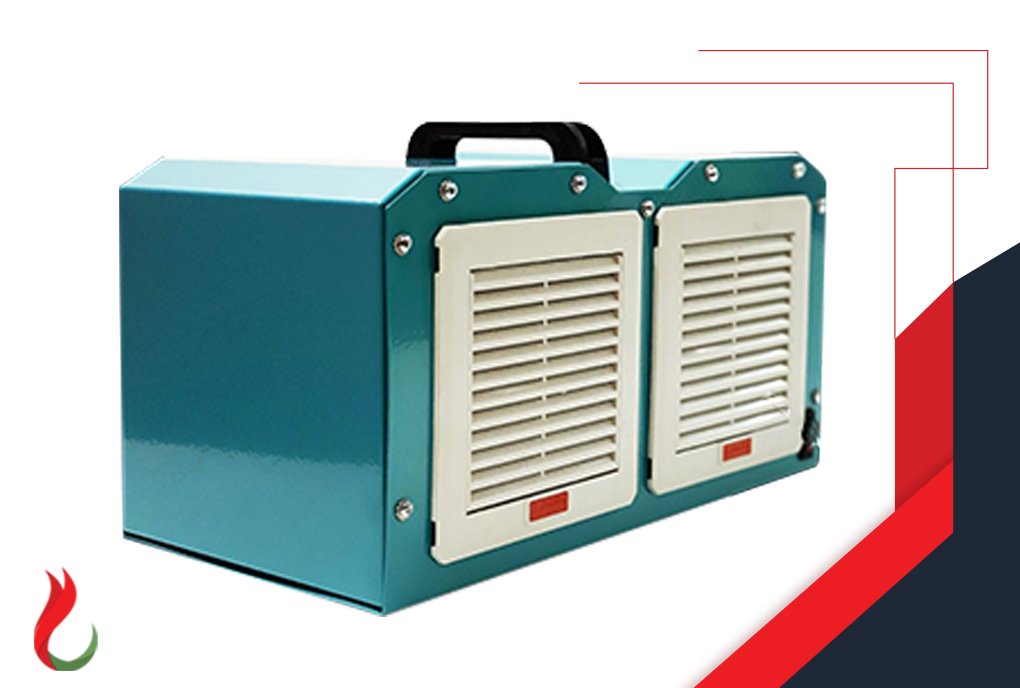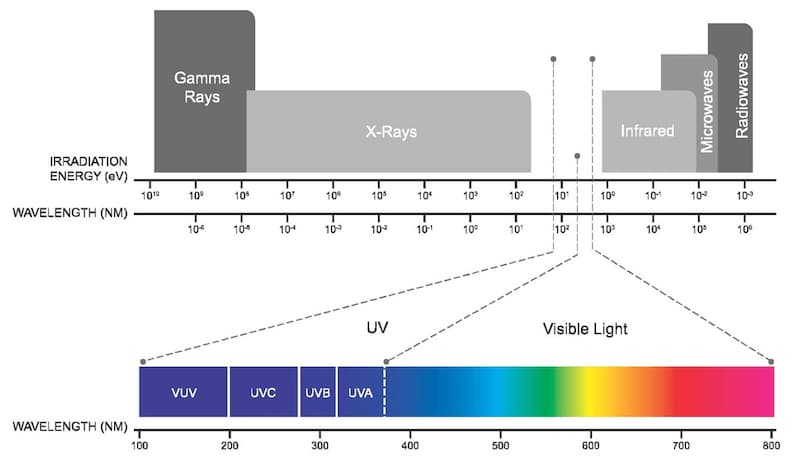
ULTRAVIOLET AIR - MEDIA CLEANER
UV radiation is electromagnetic radiation with a wavelength shorter than the visible light and longer than the X-ray (about 10-400 nm). UV radiation, according to the wavelength; It can be divided into far-UV (extreme-UV, 10-200 nm) and near-UV (near-UV, 200-380 nm). Considering the effects of near-UV on human health and the environment;

can be analyzed in three parts. UV radiation can kill all kinds of microorganisms due to its short wavelength and high energy. The greatest antimicrobial activity of UV light is in the wavelength region of 250-260 nm (253.7 nm). This wavelength is the wavelength most effectively absorbed by DNA. UV radiation energy absorbed by cellular DNAs forms chemical covalent bonds between adjacent thymine bases, forming thymine dimers. These resulting thymine dimers constitute the main mechanism of cellular UV damage. Thymine dimers formed due to this UV cause folds in DNA strands, and the natural helical structure of DNA is disrupted. This situation makes chromosome replication difficult before cell division, transcription and expression of genes cannot be done. Even if chromosome replication can be made, mutant cells that cannot reproduce will emerge. Thymine dimers are lethal when they appear in genes with vital functions and inhibit DNA replication (Figure 1). Under certain conditions, some organisms can repair DNA damage and return to an active state where reproduction is possible again. In cases where the intensity of the UV light is very intense, the damage is very common and repair is impossible in this case. The first of the repair mechanisms is the light-activated repair system possessed by most microorganisms. This system, called photoreactivation, works by separating thymine dimers. Photoreactivation is the result of the catalytic effect of visible wavelength sunlight. Some bacterial pathogens, such as Shigella, have a photoreactivation system, but viruses and some bacteria do not. Some microorganisms have another repair system that does not require light, called dark-creactivation. In this system, short DNA strands carrying thymine dimers are cut off. The repair can be done within a certain period of time, if there is no repair within this period, the damage will be irreversible.
UV radiation causes erythema on human skin as a result of prolonged and intense contact and may lead to the development of skin cancer. In addition, it can cause serious damage to the retina of some people who look directly at the UV lamp. Because of these disadvantages, UV radiation is only used as a sterilizing agent in some special cases. UV Lamps Niels Ryberg Firsen was awarded the Nobel Prize in medicine in 1903 by showing the bactericidal effect of the sun's UV in the treatment of infectious skin diseases. In 1930, Westinghouse developed UV lamps and many studies were conducted to prove their germicidal effects. As a result, the inactivating effect of UV on viruses, bacteria, fungi and Mycoplasma has been demonstrated. Ultraviolet germicidal irradiation (UVGI) is usually referred to as UV (UVC) at a wavelength of 253.7 nm. In lamps, which are generally used as a UV light source for germicidal purposes today, UV light is produced by the electric current flowing through low pressure mercury vapor in a glass tube. These lamps are called “germicidal lamps (UVC lamps)”.
Usage Areas of Ultraviolet Lamps for Microbial Control 1. Air and surface disinfection: The main usage areas of UV lamps in microbial control are disinfection of air and surfaces of operating rooms, laboratories and biological safety cabinets. In addition, they can be used in closed places such as kindergartens, cafeterias, gymnasiums, hospital rooms, where people are crowded together, to prevent the spread of airborne diseases by reducing the number of pathogenic microorganisms in the air.
TECHNICIAL SPECIFICATIONS
Voltage / Voltage: 220 V
Power / Power: 32 W
Frequency / Frequency: 50 Hz
Weight / Weight: 4.25 kg
Dimensions (LxWxH) / Dimension (LxWxH): 39x22x23 cm
Effective Area / Area: 50 m2
UV Fluorescent Avg. Life / Average Life Of UV: 8000 hours / hours
IMPORTANT NOTE: UV light causes erythema on human skin as a result of prolonged and intense contact and may lead to the development of skin cancer. In addition, it can cause serious damage to the retina of some people who look directly at the UV lamp. That's why in our AEREM19 device, the UV light is prevented from spreading to the environment with filters from a closed area. Please avoid exposure to light without a filter, with the case open!
NEWS ON THE PRESS AGAINST VIRUSES WITH UV